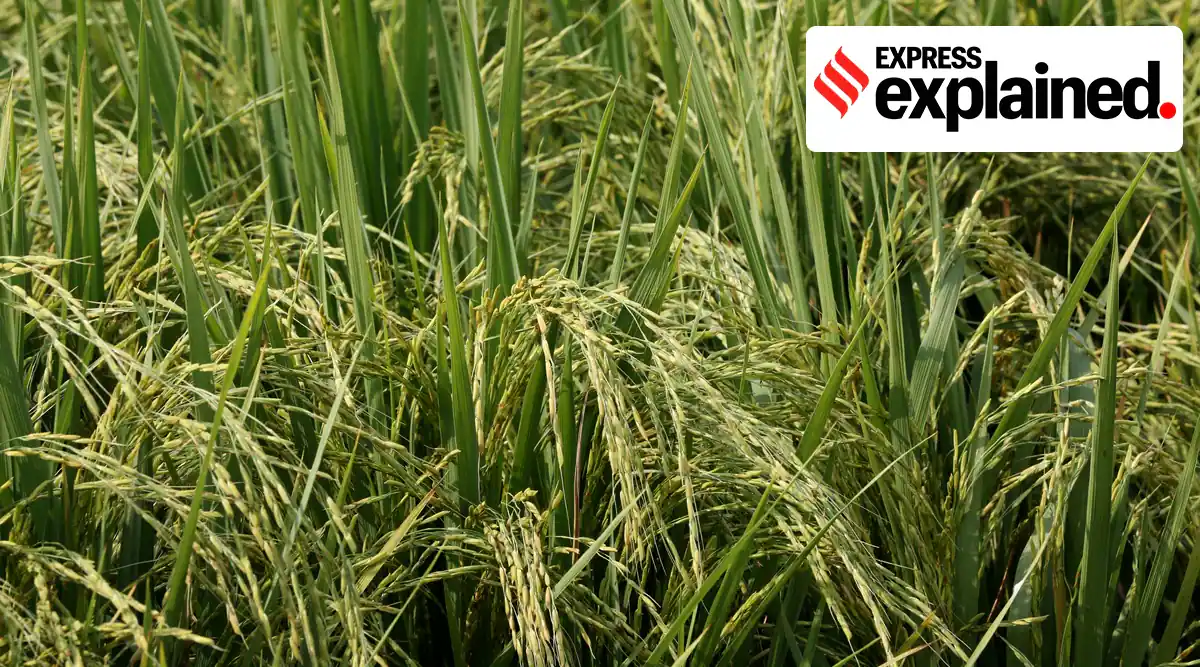





Copyright infringement not intended
Picture Courtesy: indianexpress.com
Context: Punjab's decision to ban the cultivation of the PUSA-44 paddy variety is primarily driven by concerns related to water usage, environmental factors, and stubble burning.
PUSA-44 paddy variety
|
Key reasons to ban the cultivation of the PUSA-44 paddy variety |
|
|
Water Depletion |
●PUSA-44 is a long-duration paddy variety that takes around 160 days to mature, which is approximately 35 to 40 days longer than other paddy varieties. This extended growth period requires additional irrigation cycles, putting further pressure on Punjab's already depleting groundwater resources. ● Punjab faces severe groundwater depletion, and the government aims to conserve water by banning PUSA-44, which requires more irrigation. |
|
Water-Intensive Crop |
● Paddy is inherently a water-intensive crop, and the area under paddy cultivation in Punjab continues to expand. This expansion exacerbates the strain on groundwater resources. |
|
Stubble Burning |
●PUSA-44 aggravates the problem of stubble burning in Punjab. The extended maturity period of this variety means that it is harvested just before the ideal time for sowing wheat, which is typically on November 1st. Farmers need about 20 to 25 days between paddy harvesting and wheat sowing to manage stubble disposal properly. ●The limited timeframe makes it challenging to implement stubble management techniques, leading to an increase in stubble-burning incidents. |
|
Increased Stubble Generation |
●PUSA-44 varieties generate approximately 2% more stubble than shorter-duration paddy varieties. This increase in stubble volume becomes a significant concern when cultivated on a large scale, contributing to higher stubble-burning incidents. |
|
Air Pollution |
●Stubble burning, combined with specific wind patterns and other factors, contributes to severe air pollution levels in northern India, especially during the winter months. The straw stubble left in the fields after the paddy harvest is burned to clear the fields quickly for planting the next season's crops, releasing pollutants into the atmosphere. |
|
Alternative Varieties |
●Short-duration paddy varieties are available that require less water and have a shorter growth period. These varieties are more suitable for regions with groundwater constraints and can help reduce the risk of stubble burning due to their compatibility with the wheat sowing season. |
Conclusion
Must Read Articles:
DSR METHOD: https://www.iasgyan.in/daily-current-affairs/dsr-method
STUBBLE BURNING: https://www.iasgyan.in/daily-current-affairs/stubble-burning-29
|
PRACTICE QUESTION Q. What are the key reasons behind Punjab's decision to ban the cultivation of the PUSA-44 paddy variety, and how does this decision address environmental and agricultural challenges in the region? |








© 2025 iasgyan. All right reserved